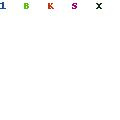
Pinacocytes are thin, flat, epithelial-type cells that cover the exterior and some interior surfaces of most sponge. Mesenchyme, also know as mesohyl in sponges, is a gelatinous matrix that contains skeletal elements and archaeocytes or amebocytes. The body wall is perforated by many pores and channels through which water enters the animal, passing into the spongocoel, and exiting it through a large opening, the osculum. The simplest body wall is approximately two cell layers thick with a gel like substance called the mesenchyme or mesohyl in-between. The general body plan consists of "more or less" recognizable cell types surrounding a spongocoel or internal cavity. Porifera, are multicellular heterotrophs. To learn about basic characteristics view the film below and then examine the diagrams of the different cell types found in sponges. Sponges appear in the fossil record before the Cambrian. This also indicates that the Kingdom Animalia is monophyletic. Sponges and Eumetazoa are sister groups with Porifera splitting off before Cnidaria. Molecular rRNA evidence suggests a common ancestor for choanoflagellates and metazoans. Molecular evidence suggests they do share a common ancestor with other animals. Scientists are studying colony formation and cell-to-cell communication in choanoflagellates in search of clues to the evolution of multicellularity. They are characterized by possession of a flagella that is surrounded by a collar.Ĭhoanoflagellates resemble sponge feeding cells (choanocytes). Many biologists feel that because of their similarity to certain cells found in sponges that Choanoflagellates, a group of protists that can be solitary or colonial, are the most likely group to have given rise to metazoans.

Multicellular animals are called metazoans. Go to and examine the relationships tree found there. Evolution of the eukaryotic cell was followed by diversification into many lineages including, modern protozoans, plants, fungi, and animals.


 0 kommentar(er)
0 kommentar(er)
